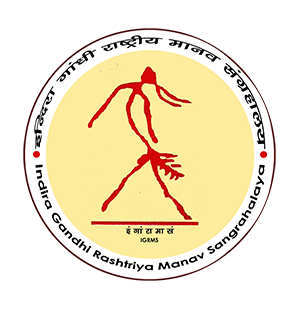मरु गाँव – Desert Village
मरु गाँव
भारतीय उपमहाद्वीप की भौगोलिक विशालता और पर्यावर्णिक विविधता अद्वितीय है जो इन क्षेत्रों में निवास करने वाले समुदायों की संस्कृति को निर्धारित करने का एक प्रमुख कारक भी है। संग्रहालय की मरु गाँव नामक इस मुक्ताकाश प्रदर्शनी में देश के मरुस्थलीय क्षेत्रों, विशेष रूप से गुजरात के कच्छ क्षेत्र और राजस्थान में रहने वाले समुदायों के आवास प्रकारों के माध्यम से उनकी संस्कृतियों के विभिन्न पहलुओं को आमजन को दिखाने का प्रयास किया गया है। गुजरात के कच्छ क्षेत्र से अर्ध घुमंतु पशुपालक समुदाय रबारी के मिट्टी, रेत, लकड़ी और घास से निर्मित आवास उनकी अनूठी पारंपरिक भित्ति चित्रकला के कारण अन्य मकानों से भिन्न हैं। रबारी कांच (अरिसा), विभिन्न रंग के धागों और कपड़ों से सुंदर कशीदाकारी करते हैं और उसी तरह मिट्टी में ऊंट की लीद मिलाकर और कांच लगाकर अपने आवास की दीवारों, अनाज की कोठियों और अलमारियों को सुसज्जित करते हैं। शुष्क मरुस्थल में हरियाली के अभाव को वह अपने बहुरंगी कपड़ों और भित्ति चित्रों से भर देते हैं और यही मरु जीवन की पहचान है। रबारी आवास संकुल के साथ ही लगा हुआ है कच्छ के रण के बन्नी क्षेत्र के कारीगर समुदाय का आवास। इस प्रदर्शनी में एक तरफ जहां राजस्थान के मरुस्थलीय पर्यावरण, ग्रामीण परिवेश के अनुकूल मिट्टी, कैर की लकड़ी तथा घास से निर्मित झोपा (मिट्टी का घर) नीम की धाणी है। वहीं दूसरी ओर स्थानीय स्तर पर उपलब्ध पीले सेंड स्टोन से निर्मित अनुपम कलाकृतियां, पालीवाल समुदाय की हवेली एवं उस क्षेत्र में पूर्वजों की याद में बनाई जाने वाली छतरी है। जटिल कलाकृतियों को स्थानीय कलाकारों ने बड़ी ही कुशलता से कठोर पीले पत्थरों में उकेरा है। समय-समय पर खान-पान, रहन-सहन, मेलों और उत्सवों के माध्यम से इन संस्कृतियों की जीवंत प्रस्तुति भी प्रदर्शनी का एक भाग है।
Desert Village:
The geographical vastness and environmental diversity of the Indian subcontinent is unique, which is also a major factor in determining the culture of the communities inhabiting in this regions. The Desert Village open air exhibition of the museum seeks to showcase various aspects of the cultures of people living in desert regions of country, especially the Kutch region of Gujarat and Rajasthan through their house-types. The houses of Rabaris, a semi-nomadic pastoral community from the Kutch region of Gujarat, differ from other houses because of their unique traditional mural craft, made of mud, sand, wood and grass. Rabari do beautiful embroidery on cloth by using mirrors and threads of different colors. Similarly they also decorate the walls, the granaries and the almirahs by using mirrors and clay mixed with camel dung. The lack of greenery in the dry desert is filled with colorful clothes and murals by them and this is the hallmark of desert life. Adjacent to the Rabari complex is the house type of the artisan community of Banni area in the Rann of Kutch. On one side of this exhibition is Neem Ki Dhani (mud house) made of mud, Kairwood and grass suited to the desert environment of Rajasthan and on the other side is Haveli of Paliwal community and Cenotaph made in yellow sandstone in the memory of ancestors. The complex motifs have been skillfully carved in yellow sandstone by the local artists. Live presentation of these cultures through ethnic cuisine, lifestyle, fairs and festivals from time to time is also a part of the exhibition.



